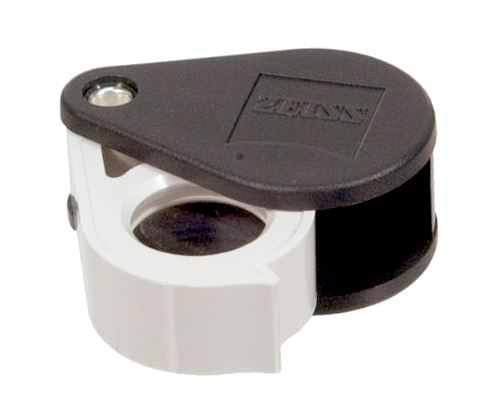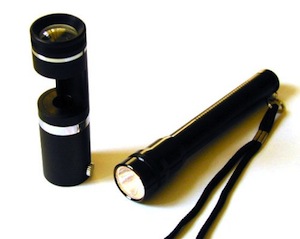[Updated June 9, 2025]
Antoinette Matlins has been writing the definitive buying guides for gems and jewelry for decades and every one of her books has a section on how to choose and use a jewelry loupe. First step when learning to evaluate gems and jewelry, she says (and I don’t think anyone with experience in gems and jewelry would disagree), is to start with a good loupe.
You probably know this, but you may be a little confused by the abundance of choice. So many loupes out there — and some are, like, $3! While you may want to avoid those, you’ll be relieved to know an adequate loupe can be had for under $100. And even, depending on your needs, well under.
Expert tips on choosing a loupe
When I found myself looking to upgrade my own loupe some years ago, I asked Antoinette what I should look for. With her permission, I recorded that conversation so I could share it with others who may be in a similar situation. Here it is:
Which loupes work best for examining gemstones?
Antoinette Matlins: A proper loupe for gemology or jewelry has to be a ten-power (10x) triplet — three lenses fused together to eliminate distortion at the edges and color fringing. You know those big magnifying glasses you used to see elderly people use? Anything viewed through those gets blurrier and blurrier the further you get from the center. A triple-layered lens corrects that.
I’ve heard many so-called triplets are actually doublets. Is that true?
AT: Absolutely. I see doublets labeled all the time as triplets.
How can I tell if a loupe is really a triplet?
AT: You can tell the difference by the amount of distortion at the edges or color fringing. To test a loupe, hold it a half-inch from newsprint and make sure everything is in focus from one edge to another. Then hold it over flat white paper. If it takes on a beige tone, it’s not a triplet.
How much should I expect to spend on a jeweler’s loupe?
AT: The reality is that you cannot buy a proper, absolutely correct 10x triplet loupe that is exactly what it should be for under $50. When you see them advertised for less, they’re not fine, properly-corrected loupes.
Which brand do you recommend?
AT: Bausch + Lomb has a wonderful reputation for top-of-the-line loupes. There are also high-quality loupes made by Nikon and Zeiss but they can exceed $100. I don’t know that you need to spend that kind of money. Bausch + Lomb offers a very fine, optically-correct gemological loupe for about $50 which is, in my opinion, the best value for the money. Because it has a smaller diameter in the loupe area, some people complain that you have to move it around to take everything in. But you’re looking at — or for — microscopic things inside or on the surface of a stone. A smaller diameter is actually better for gemological purposes because it helps you focus more critically and precisely.
In your buying guides, you recommend a dark-field loupe. What’s that?
AT: The gem identification book explains, in layman’s terms, the instruments you need, how to use them properly, and what they will reveal regarding treatments, fillers, synthetic vs. natural. At a minimum, you’ll need a particular type of 10x loupe, a specially modified dark-field loupe, a UV lamp with both long-wave and short-wave output, and a diamond “type” spotter.
I use it with a little black cylindrical thing with background light. When examining a piece of jewelry with this, you have light coming directly through the bottom of the stone, coming in laterally. That is the fastest, easiest way to spot lead-glass fillings in diamonds. I can have people who’ve never held a loupe or examined diamonds and within 10 minutes they’re spotting every fracture-filled diamond I have in the room. It’s indispensable.
Any recommendations for dark-field loupes?
AT: You can use any dark-field loupe, specially modified. I recommend you use older types if you’re looking at a ring or brooch or larger piece, or else there might not be any space in the opening to put your stone to actually look at it. The setting itself may block it so the modified loupes allow more flexibility in terms of maneuvering the jewelry. Almost any jewelry supply house will have them. My publisher Gemstonepress.com sells a good one, not that expensive, not dirt cheap, but around $50.
So, there you have it, classic advice from one of the most respected gem and jewelry appraisers and dealers in the U.S. I have since asked this question of many others, and tested them all. Here’s the consensus:
Five best jewelry loupes
Here are the best 10x triplet loupes on the market for evaluating gems and jewelry, based on value and specific usage.
Best value: BelOMO 10x triplet
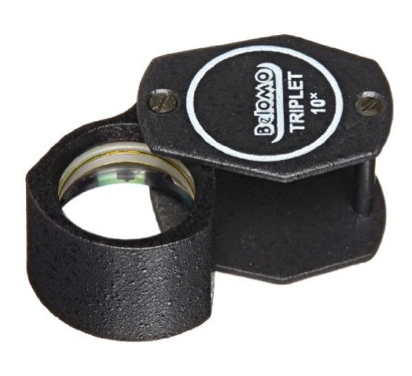
As this post is being updated (2025), it’s become more difficult to find the classic Bausch & Lomb loupe Antoinette was recommending. Many inferior loupes labeled “Hastings” (missing the Bausch & Lomb) have popped up. If you want the classic, compact Bausch & Lomb 10x triplet loupe, your best bet is to buy one of the older ones on eBay.
In a similar price range,, the BelOMO triplet loupe is also well worth considering — and the one I now use most. Like the Bausch & Lomb, the BelOMO 10x triplet loupe has a reputation for accuracy and can usually buy one for less than $60 on eBay. But the BelOMO is also known for its durability and ease of use. Encased in steel, it’s a wee bit bulkier and more rugged than the tiny B&L, with a slightly larger 21mm lens.
Best loupe for high-end goods: Zeiss Optics D40
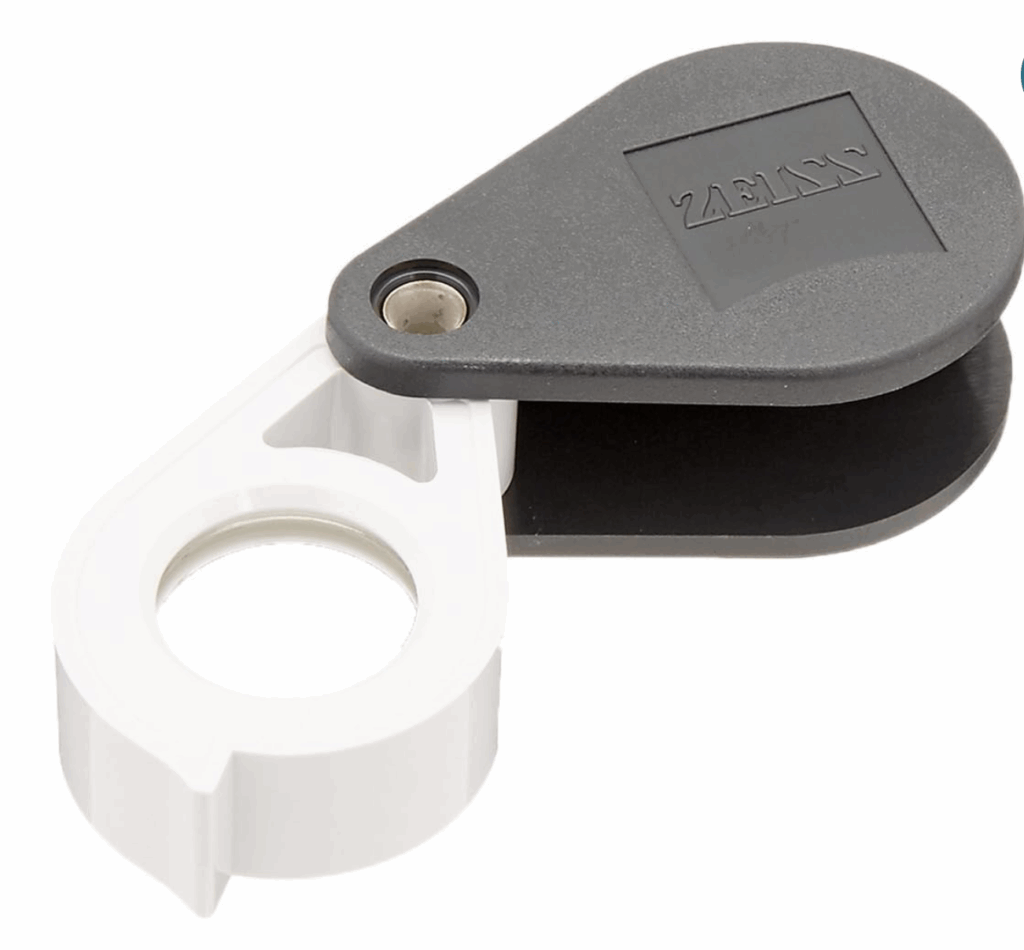
If you have a bit more to spend and plan to use your loupe on high-end goods, you might want to spring for the German-made Zeiss Optics D40 loupe.
Zeiss made its name on high-performance lenses used for surgical microscopes and ophthalmology.
Lenses on their loupes have a coating that lends a brighter view. A Zeiss Optics D40 10x Aplanatic loupe can usually be found on Amazon now for less than $100, shipping included.
Best lens for the money: Nikon 10x triplet loupe
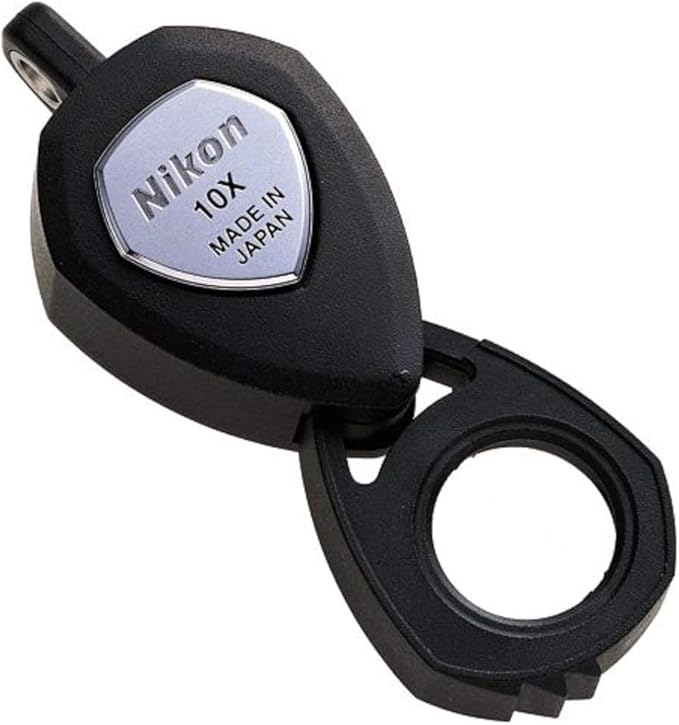
Prices on all loupes have come down since this originally posted. Nikon 10x triplet loupes, once $80+ on Amazon, are now available for less than $60. Like Zeiss, Nikon built its reputation on the quality of its lenses, in this case camera lenses. So it’s not surprising that the Nikon 10x loupe gets high marks for clarity as well as durability.
Best classic back-up: Bausch & Lomb 10x triplet loupe
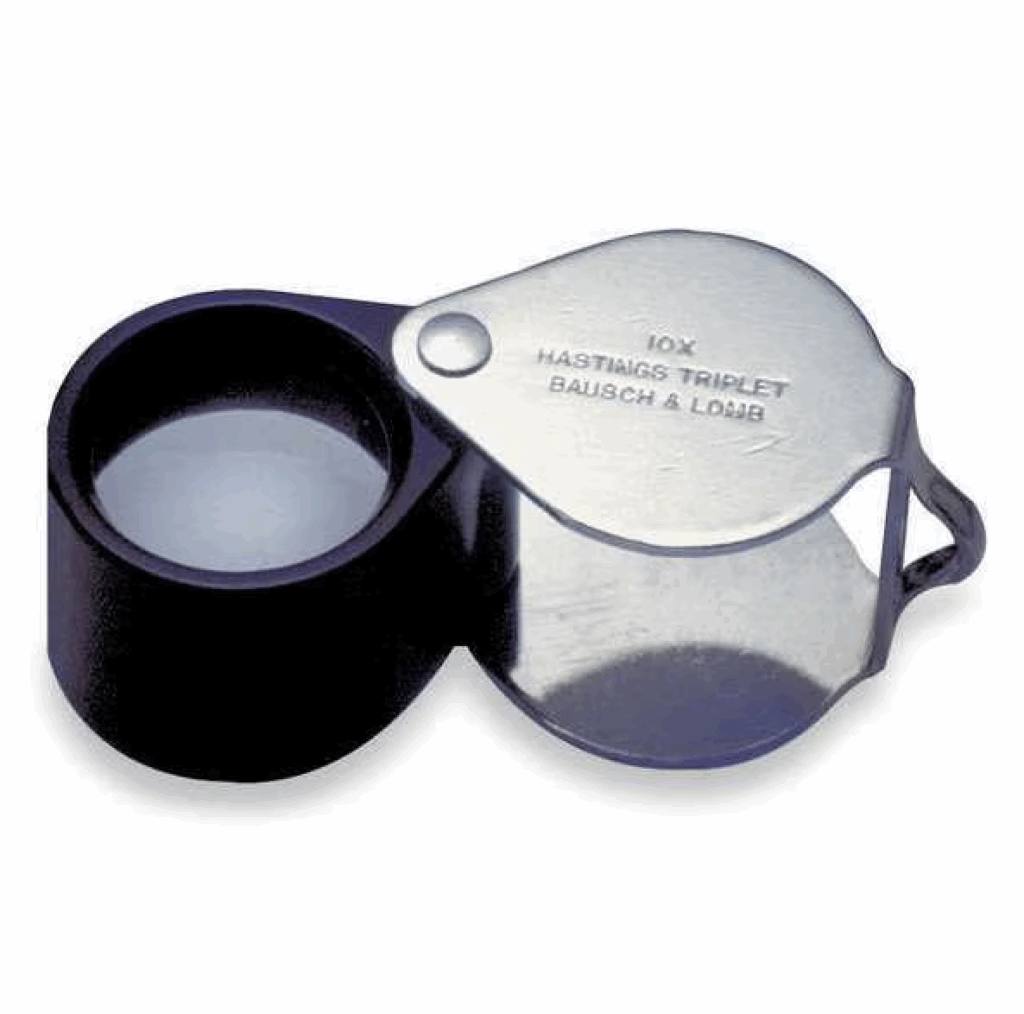
Here is the loupe Matlins mentions above, which at the time, was the one she considered the best value. It’s become harder to find the classic Bausch & Lomb 10x loupe and many knockoffs are now sold as simply “Hastings.” But you can still find this dependable little loupe — it’s very small — for affordable prices on eBay.
Best for spotting lead-glass in set stones: Dark-field loupe
When examining a piece of jewelry with one of these, you have light coming directly through the bottom of the stone, making this the fastest, easiest way to spot lead-glass fillings in diamonds.
As Antoinette said, you can use any dark-field loupe, as long as it’s modified to fit what you’re looking at. If you’re considering a bulky piece of jewelry or a larger stone, you need a space large enough to insert the piece so you can examine it under magnification.
The setting of the jewelry itself may block your view of the stone(s), so modified loupes allow more flexibility to maneuver. At the time of this update (2025), this dark-field loupe sells on Amazon for about $30, including the flashlight.
Recommended loupes
BelOMO 10x triplet loupe (buy on eBay)
Nikon 10x triplet loupe on Amazon
Zeiss Optics D40 10x Aplanatic Achromatic Pocket Magnifier on Amazon
Darkfield loupe (as described by Antoinette above) on Amazon
Bausch & Lomb 10x triplet loupe (buy on eBay)
Related posts
Beware of glass-composite rubies: How to spot them
What you need to know about jewelry hallmarks
How to photograph jewelry: Tips from the pros
This page contains affiliate links. Using them puts a buck or two toward maintenance of this site.

